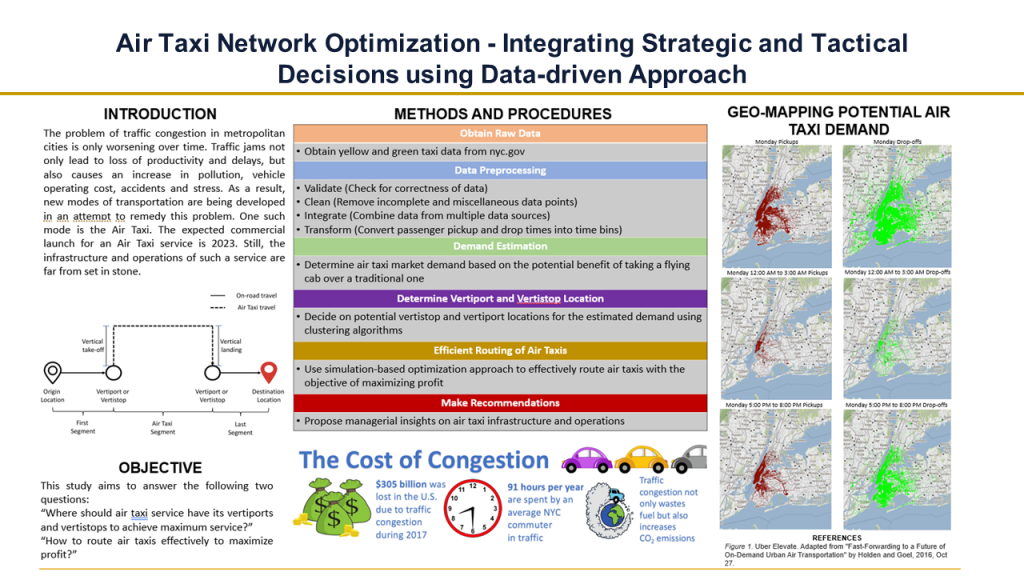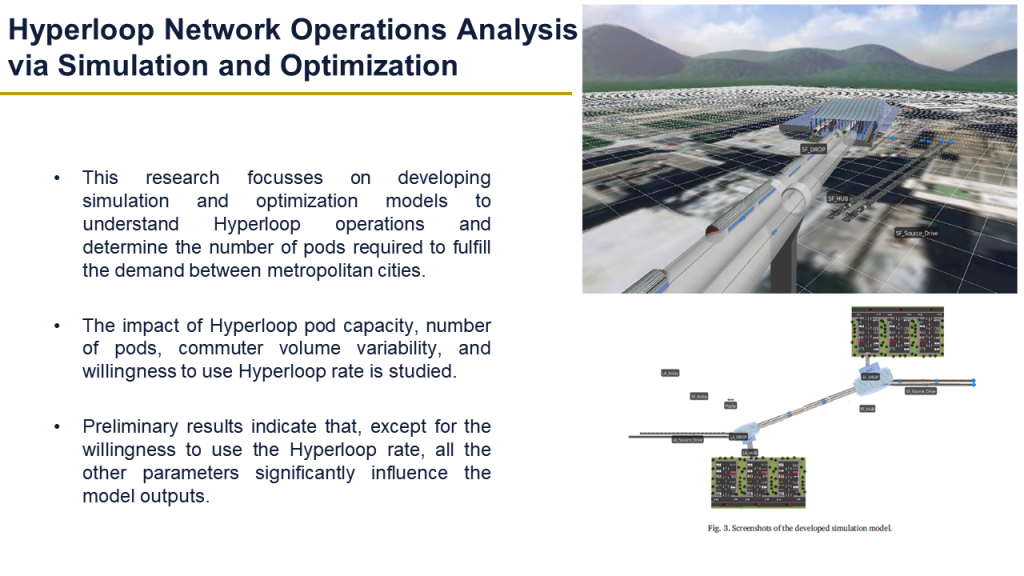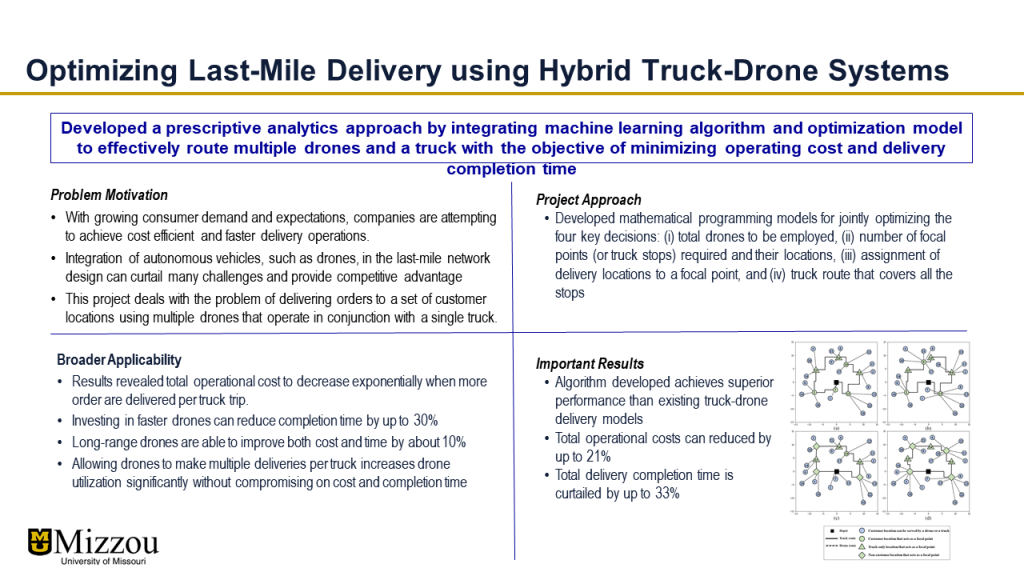Industrial engineers use optimization and simulation approaches to design and evaluate new transportation logistics technologies such as drones, hyperloop, etc.
Faculty
Jim Noble
- Underground Freight Pipeline System Logistic Network Design
Suchi Rajendran
- Air Taxi Network Optimization – Integrating Strategic and Tactical Decisions using Data-driven Approach
- Study of Hyperloop Network Operations using Simulation and Optimization Approaches
Sharan Srinivas
- Optimizing Last-Mile Delivery using Hybrid Truck-Drone Systems
Projects
Logistics of Using Underground Pipelines for Freight Transportation
 Problem context
Problem context
Many large metro areas around the world are highly congested. Underground freight pipelines or tubes can reduce congestion, reduce environmental impact of freight movement and reduce overall transportation cost.
Results
- Tube network design – I/O location, flow path
- Capsule dispatching / control algorithms with respect to square tardiness objective function
- Cargo tracking approaches
- Design of load / unloading processes
Air Taxi Network Optimization – Integrating Strategic and Tactical Decisions using Data-driven Approach
 This study aims to answer the following two questions:
This study aims to answer the following two questions:
- Where should air taxi service have its vertiports and vertistops to achieve maximum service?
- How to route air taxis effectively to maximize profit?
Hyperloop Network Operations Analysis via Simulation and Optimization

- This research focusses on developing simulation and optimization models to understand Hyperloop operations and determine the number of pods required to fulfill the demand between metropolitan cities.
- The impact of Hyperloop pod capacity, number of pods, commuter volume variability, and willingness to use Hyperloop rate is studied.
- Preliminary results indicate that, except for the willingness to use the Hyperloop rate, all the other parameters significantly influence the model outputs.
Optimizing Last-Mile Delivery using Hybrid Truck-Drone Systems
 Developed a prescriptive analytics approach by integrating machine learning algorithm and optimization model to effectively route multiple drones and a truck with the objective of minimizing operating cost and delivery completion time
Developed a prescriptive analytics approach by integrating machine learning algorithm and optimization model to effectively route multiple drones and a truck with the objective of minimizing operating cost and delivery completion time
Problem Motivation
- With growing consumer demand and expectations, companies are attempting to achieve cost efficient and faster delivery operations.
- Integration of autonomous vehicles, such as drones, in the last-mile network design can curtail many challenges and provide competitive advantage
- This project deals with the problem of delivering orders to a set of customer locations using multiple drones that operate in conjunction with a single truck.
Broader Applicability
- Results revealed total operational cost to decrease exponentially when more order are delivered per truck trip.
- Investing in faster drones can reduce completion time by up to 30%
- Long-range drones are able to improve both cost and time by about 10%
- Allowing drones to make multiple deliveries per truck increases drone utilization significantly without compromising on cost and completion time